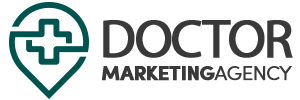Paid advertising offers numerous benefits for medical practices, providing targeted exposure, increased visibility, and the opportunity to reach potential patients effectively. Let’s explore the benefits of paid advertising, platforms like Google Ads and social media ads, targeting options, and the importance of compelling ad copy:
Benefits of Paid Advertising for Medical Practices
Paid advertising provides several advantages for medical practices, including:
– Targeted Reach: Paid ads allow practices to target specific demographics, locations, interests, or search queries, ensuring their ads are shown to relevant audiences. This increases the likelihood of reaching potential patients who are actively seeking healthcare services.
– Increased Visibility: Paid ads provide immediate visibility in search engine results or social media feeds, bypassing the time-consuming process of organic rankings. This allows medical practices to quickly gain exposure and attract potential patients.
– Measurable Results: Paid advertising platforms provide detailed analytics and tracking capabilities, allowing practices to monitor ad performance, measure click-through rates, and analyze conversion metrics. This data helps optimize campaigns and maximize return on investment (ROI).
– Cost Control: Paid advertising platforms offer budgeting options, allowing practices to set daily or campaign-specific budgets. This provides control over advertising spend and ensures that the budget is allocated efficiently.
– Flexibility: Paid advertising allows practices to test different ad formats, messaging, and targeting strategies. This flexibility helps identify the most effective approaches for reaching and engaging the target audience.
Platforms for Paid Advertising
a) Google Ads: Google Ads (formerly Google AdWords) is a powerful platform for paid advertising. It enables practices to display text ads, banner ads, or video ads in Google search results, on partner websites, and within specific apps. Google Ads allows practices to target keywords related to their services, ensuring their ads are shown when potential patients search for relevant terms.
b) Social Media Ads: Social media platforms, such as Facebook, Instagram, Twitter, and LinkedIn, offer robust advertising options. These platforms provide extensive targeting capabilities, allowing practices to narrow down their audience based on demographics, interests, behaviors, or geographic locations. Social media ads can be in various formats, including text, images, videos, carousels, or sponsored content.
Targeting Options
Paid advertising platforms provide various targeting options to reach the desired audience:
– Demographics: Target ads based on age, gender, income, education, or marital status.
– Interests and Behaviors: Target individuals with specific interests, hobbies, online behaviors, or purchase intents.
– Geographic Targeting: Focus ads on specific locations, from cities to regions or ZIP codes.
– Keyword Targeting: In Google Ads, target ads to appear when specific keywords are searched.
Importance of Compelling Ad Copy
Crafting compelling ad copy is essential to capture attention and generate clicks. Consider the following tips:
– Clear and Concise Messaging: Communicate the unique value proposition of the medical practice, highlighting the benefits or solutions offered.
– Call-to-Action (CTA): Include a clear and compelling CTA, such as “Schedule an Appointment” or “Learn More.” This directs potential patients to take the desired action.
– Relevant and Targeted Keywords: Incorporate relevant keywords in the ad copy to align with the search intent of the audience.
– Ad Extensions: Utilize ad extensions, such as site links, call extensions, or location extensions, to provide additional information and enhance the ad’s visibility and relevance.
Conclusion
By leveraging paid advertising platforms like Google Ads and social media ads, medical practices can reach a highly targeted audience, increase visibility, and drive patient engagement. Crafting compelling ad copy that resonates with the audience and aligns with their search intent helps maximize the effectiveness of paid advertising campaigns. Regular monitoring, testing, and optimizing of ads ensure optimal performance and ROI for medical practices.
